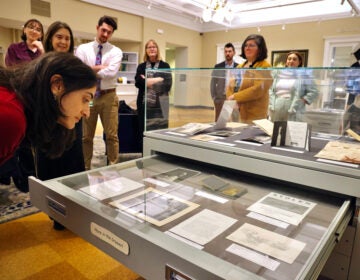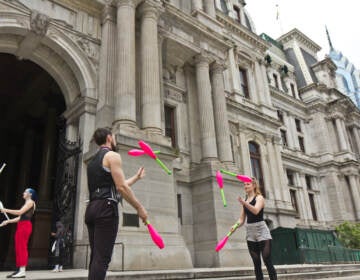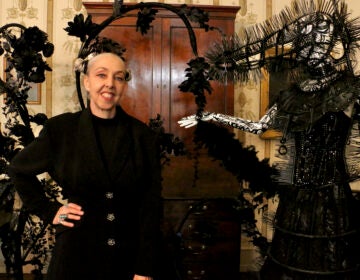Claes Oldenburg, 93, created giant sculptures that became icons of Philly
The pop artist died on Monday at 93. His giant sculptures of common objects evoke the silly and the serious of Philly.
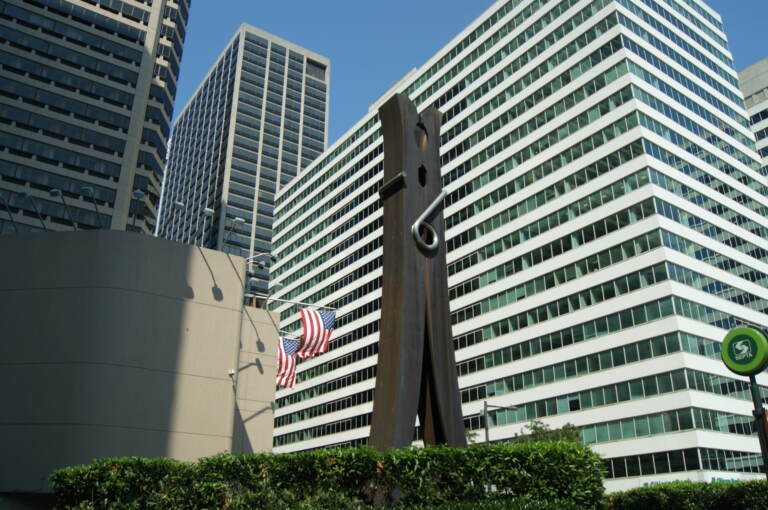
“Clothespin” (1976) by Claes Oldenburg, was commissioned by developer Jack Wolgin as part of the Redevelopment Authority’s Percent for Art program. (Caitlin Martin, courtesy of the Association for Public Art)
Claes Oldenburg made an indelible mark on Philadelphia’s urban landscape, three times.
His iconic Clothespin, a black, 45-foot tall stylized clothespin made of Cor-Ten steel, was installed in 1976 across from City Hall on 15th Street. In 1981, his 16-foot wide Split Button was installed on the campus of the University of Pennsylvania. In 2011, a giant paintbrush loaded with orange paint, called Paint Torch, was installed outside the Pennsylvania Academy of the Fine Arts on North Broad Street.
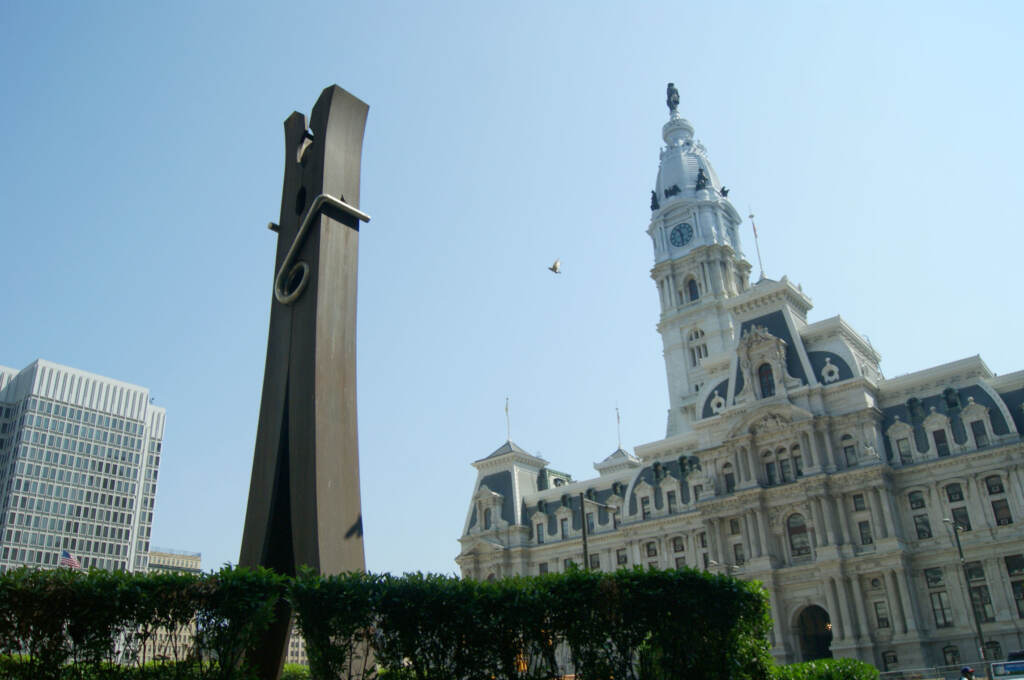
Another outdoor piece by Oldenburg, Giant Three-Way Plug, was added to the Philadelphia Museum of Art’s sculpture garden in 2010. The PMA also has an “indoor” version of the electrical adaptor made from cherry wood.
Oldenburg, a pop artist known for turning common objects into enormous monuments, died on Monday at age 93. He had been a major American artist since the 1960s.
Claes has little personal connection to Philadelphia: he was born in Sweden and as a boy moved to Chicago where his father was Sweden’s consulate general. He became a U.S. citizen in 1953 and ultimately settled in New York City.
His work, however, has become part of the fabric of life in Philadelphia.
“It’s such a beloved sculpture that people can’t seem to stay off of it. There are always children climbing on it and people taking photographs or selfies through one of the buttonholes,” said Lynn Marsden-Atlass, the curator at Penn where Split Button dominates the entrance to the Van Pelt Library.
Split Button is made of aluminum painted white, so scuff marks from errant shoes show up prominently.
“I’m regularly conserving it,” said Marsden-Atlass.
Oldenburg’s pieces for Philadelphia are deeply informed by the city. Split Button, for example, features four large threading holes, representing the four historic squares of the city, according to Marsden-Atlass. The split is the Schuylkill River bisecting the city.
According to lore, the button is imagined to have popped off the vest of Benjamin Franklin, whose 1899 statue by John Boyle stands across quad.
The Clothespin stands as a beacon at 15th and Market Streets, the shape of its spring meant to resemble “76,” in tribute to Philadelphia as the birthplace of American democracy.
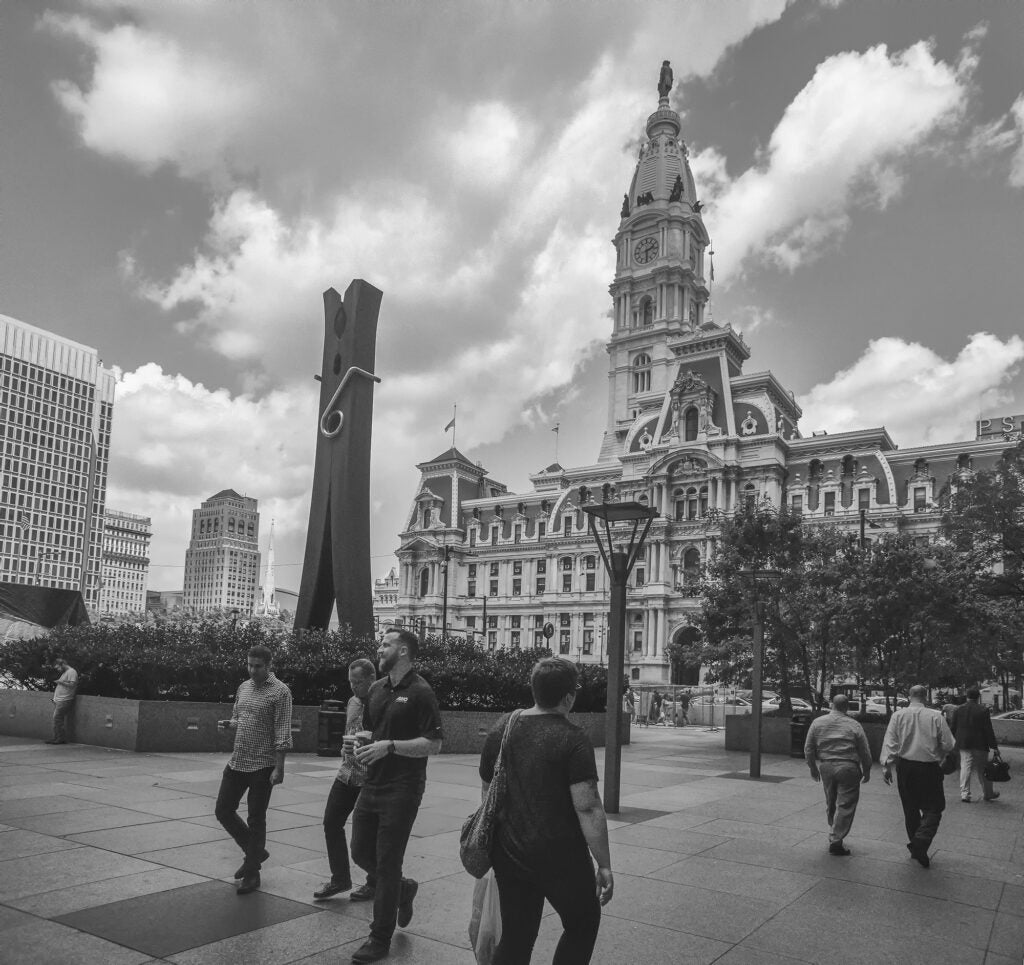
“It has really become to symbolize the city,” said Laura Griffith, deputy director of the Association for Public Art. “Oldenburg frequently tries to promote democracy in his work. And his work always has a bit of humor and wit.”
Griffith said the Paint Torch paintbrush at PAFA resembles the torch of the Statue of Liberty, which was first displayed at the Philadelphia Centennial Exposition in 1876.
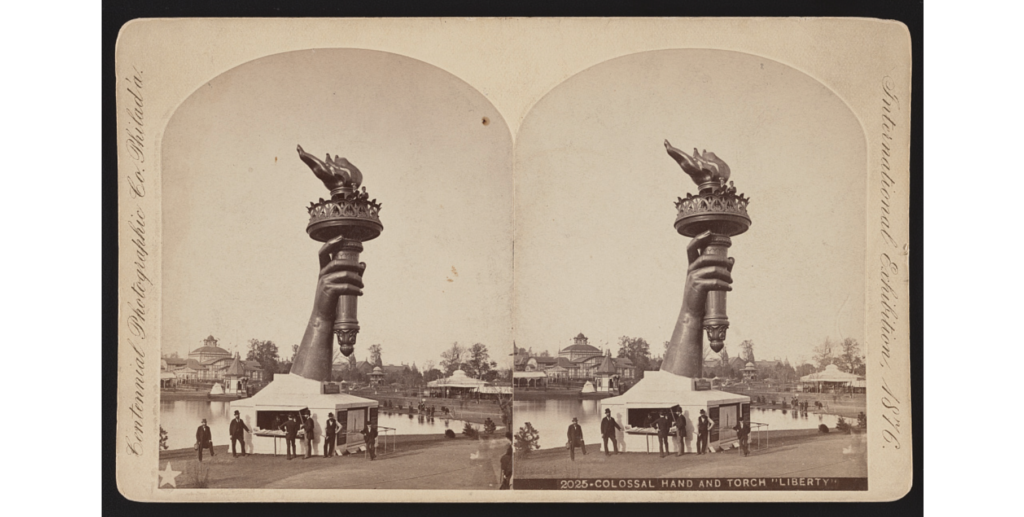
“You can understand and appreciate his works on many different levels, from objects that he’s making monumental to more conceptual ideas that you only know about when you start digging,” said Griffith.
The Clothespin, for example, not only references the bicentennial with a shape that seems to aspire to the skyscrapers surrounding it, but also is meant to be intimately affectionate. Oldenburg was influenced by The Kiss (1916), a sculpture by Constantin Brancusi, featuring two figures embracing.
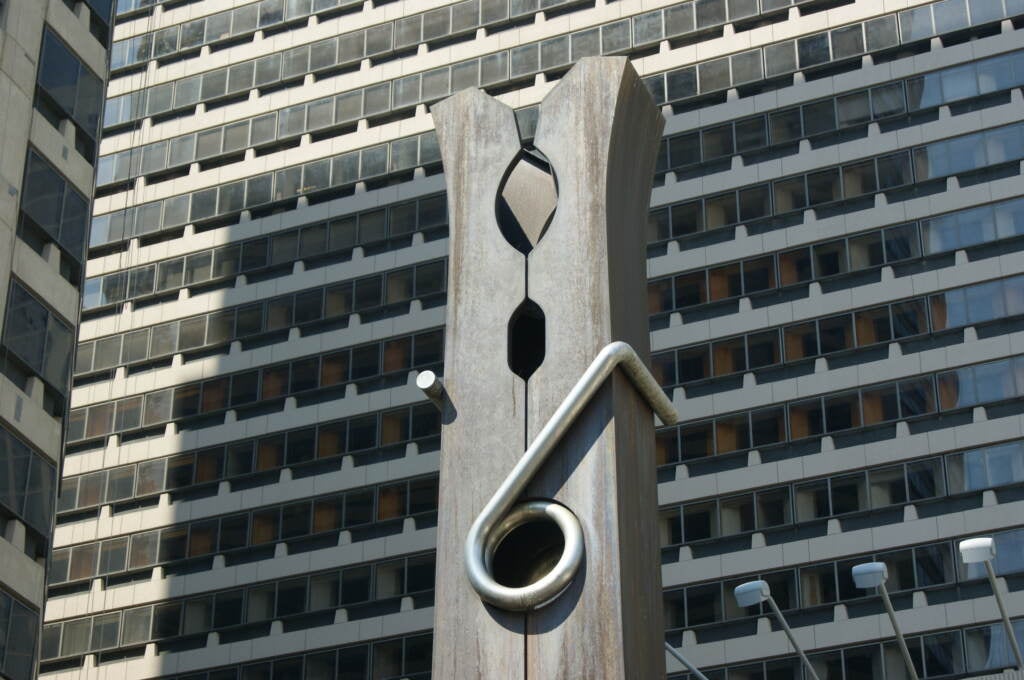
The sculpture, one of the first modernist sculptures that influenced 20th-century abstract artists, including Oldenburg, is in the collection of the Philadelphia Museum of Art.
His thinking can be seen in an earlier conceptual drawing of the Clothespin published in 1972 with a small image of Brancusi’s sculpture in a lower corner.
“That’s the mark of a really good artist,” said Griffith. “To really learn as much as you can about that place, and the people, and the culture, and to make something specific for that place.”

Get daily updates from WHYY News!
WHYY is your source for fact-based, in-depth journalism and information. As a nonprofit organization, we rely on financial support from readers like you. Please give today.



